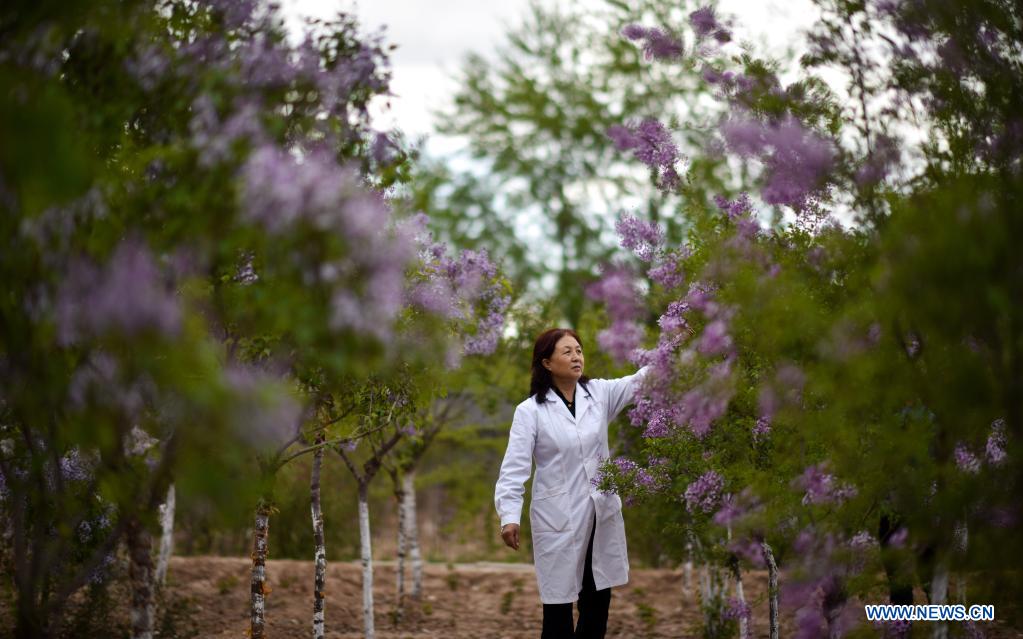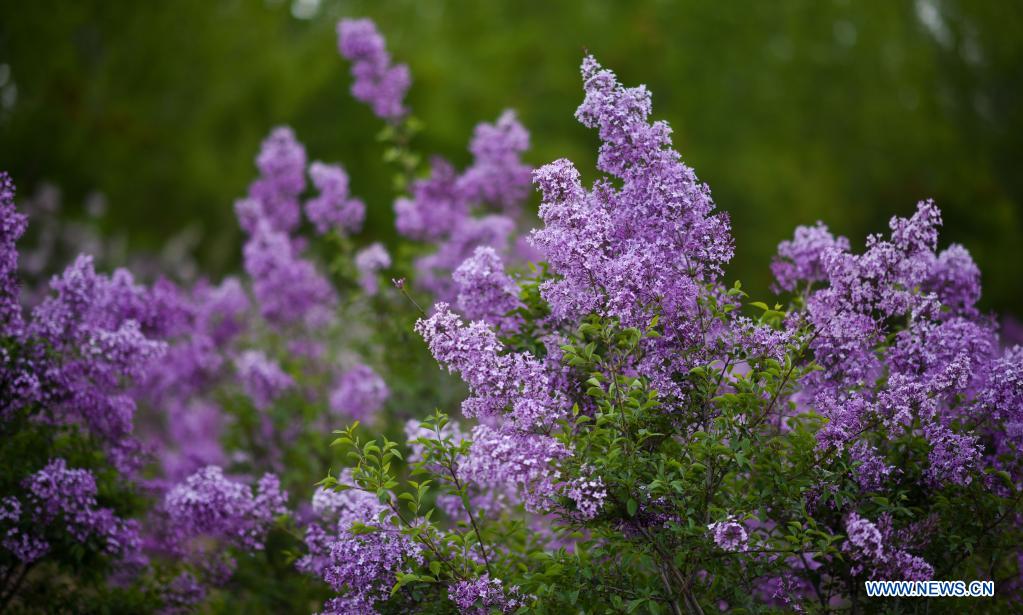Forestry expert introduces new lilac varieties to inhospitable land in Qinghai
Located at an elevation of about 2,300 meters, in Xining, the capital city of northwest China’s Qinghai Province, 70 percent of floral plants grown in the city’s downtown are lilacs.

Zhang Jinmei checks the flowering of lilacs at a seedling breeding base of Xining forestry science research center in northwest China's Qinghai Province, May 6, 2021. (Xinhua/Wu Gang)
As the city flower of Xining, the lilac found its way to the city thanks to efforts taken by Chinese researchers, including Zhang Jinmei, head of the Xining forestry science research center, who is also a delegate to the 20th National Congress of the Communist Party of China.
In the 1990s, lilacs were widely planted in the downtown area of Xining. However, superior varieties were not planted on a large scale.

Zhang Jinmei (C) discusses the growth of lilacs with colleagues at a seedling breeding base of Xining forestry science research center in northwest China's Qinghai Province, May 6, 2021. (Xinhua/Wu Gang)
"Our research on lilacs has not kept up with the pace of the promotion of the floral plant. We also hadn't cultivated any superior lilac varieties or mastered any experience regarding introduction of new varieties to the city or localization of them," Zhang recalled.
Zhang told herself that she would try her best to cultivate superior varieties of lilacs that could survive in Xining. In 1998, Zhang began to cultivate seedlings for several varieties of lilac at a planting base that covered an area of 480 mu (32 hectares) located in the city.

Zhang Jinmei checks the flowering of lilacs at a seedling breeding base of Xining forestry science research center in northwest China's Qinghai Province, May 6, 2021. (Xinhua/Wu Gang)
She then explored various breeding methods to find the best one for local conditions. In 2013, Zhang began working at the Xining forestry science research center, focusing on the breeding and protection of rare and endangered lilac varieties.
Syringa pinnatifolia Hemsl., a lilac species endemic to China, was once rated as an endangered species because of its low reproductive rate and slow growth rate.
To collect a variety of specimen, Zhang and members on her research team visited many places in and out of Qinghai Province until they finally discovered two lilac plants.

Photo taken on May 6, 2021 shows lilacs in bloom at a seedling breeding base of Xining forestry science research center in northwest China's Qinghai Province. (Xinhua/Wu Gang)
Two years later, they eventually solved difficulties regarding breeding and planting of Syringa pinnatifolia Hemsl., successfully cultivating seedlings of Syringa pinnatifolia Hemsl. for the first time.
Thanks to the efforts of Zhang and her team of forestry experts, the Xining forestry science research center has built the country's first lilac germplasm resource bank.
"We are making full use of the lilac germplasm resource bank to study the diversity and breeding of the plant, striving to make contributions in introducing more varieties suitable for the plateau environment and to building Qinghai into an eco-friendly place," Zhang expressed.
Photos
Related Stories
- CPC sets stage for historic 20th Congress
- Plenum makes full preparation for 20th CPC National Congress
- 19th CPC Central Committee concludes 7th plenary session
- Press center for 20th CPC National Congress opens
- China's decade of solid progress on emergency response
- China's speed
- How does the CPC build friendships around the world?
- Profile: Guarding lives of those on brink of death
- Themed exhibition showcases China's achievements over past decade
- ICU nurse devoted to saving lives
Copyright © 2022 People's Daily Online. All Rights Reserved.









